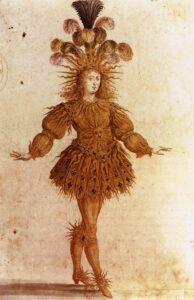Something has bothered me since I’ve been interested in dance. It feels like people perceive it as a ‘lesser’ art. One that’s underrepresented in European and North American scholarship. This is despite dance being an essential aspect of human culture, documented as early as 10,000 years ago (Wikipedia: History of Dance). In this blog post, you will learn about the history of dance in European culture. And how this history has informed the modern European and North American view of dance as a ‘lesser’ art, excepting ballet as the ‘highest’ dance art. Why does this matter? There are so many other forms of dance out there (Beaman 2018). One is not ‘better’ than the other, despite what European and North American tradition tells us. Go out into the world and try them!
Dance in Academia
Dance has been part of the European and North American academic world for much less time than its sister art, music. Did you know the first academic journal of dance research didn’t exist until 1969 (the Congress on Research in Dance)? But ‘musicology’ or the study of music has existed as a discipline since the mid-1800s (Britannica: Musicology). And what do you call a dance researcher? They usually have to position themselves as looking at dance through the lens of an established discipline. For example, dance science, dance anthropology, dance history, dance philosophy, … (Wikipedia: Dance Research). Not ‘danceology’ in the same vein as ‘musicology’, except for the narrow dance-specific field of choreology (movement analysis and description). So dance is still ‘finding its feet’ in the European and North American academic world. That’s one piece of evidence that it’s perceived a ‘lesser’ art. How did this come about?
Arts in Medieval Europe
I want to go back in time to medieval Europe to start my answer. In early European Christian times, dance was associated with Greek and Roman ‘pagan’ rituals. It was initially therefore frowned upon by the church. But by the 13th century, dance was a part of collective Christian worship. People would not stop dancing. And then the Protestant Reformation and Catholic Counterreformation came along and declared dance idolatrous. By the end of the 16th century, dance was erased from Christian worship. (Dickason 2021) So by the 1600s dance was decidedly not ‘art’ in the eyes of the church, the main power in Medieval Europe. (Roberts and Westad 2013, p. 482-512) Contrast that to visual art, architecture, and music. These were core components of Christian worship – religious paintings and sculpture, majestic cathedrals, and sung hymns.
Dance in Early Modern Europe
So dance wasn’t ‘fine art’ in the 1600s. What was? As power ebbed from the church, it consolidated among powerful European monarchies. France was the cultural centre of the European world under monarch Louis XIV. (Roberts and Westad 2013, p. 573-600) Various French authors discussed and codified the notion of ‘fine art’. By the 1750s, they settled upon the definition in D’Alembert’s Discours Préliminaire. That is, painting, sculpture, architecture, music, and poetry were the five fine arts. (Kristeller 1952) It is my opinion that painting, sculpture, music, and architecture take their place among the fine arts as inherited from the medieval Christian tradition. And that poetry (and by extension literature) took its place because printed material became widely available following the introduction of the mechanical printing press to Europe in the 1500s. So that’s why the five ‘fine arts’ (Wikipedia: Fine Art) are the way they are. Because they were identified as such by French scholars in the 17th and 18th centuries.
Ballet in Early Modern Europe
And finally, what about ballet? And what does that mean for dance arts and scholarship? Ballet was elevated from an amateur to a professional art form by Louis XIV of France (there he is again) in the late 1600s (Wikipedia: History of Ballet). As France was the European cultural centre, the French idea of ballet as a Royal art became fashionable across Europe. So ballet is the perceived ‘highest of the dance arts’ because it was popular among royalty almost 400 years ago. In modern times, dance is not generally perceived as a ‘fine’ art in North America and Europe. Ballet is the occasional exception because of this French courtly tradition which has been carried forward.

Conclusion
There are so many types of dance out there. And regardless of what European and North American tradition tells us, dance of all types is an important human art form. So go out into the world and dance! And don’t feel bad that it’s not ‘fine art’ – it is art. If you’re an academic, don’t be afraid to be a ‘danceologist’ and research dance through its own lens. If you’re a dancer, try as many forms of dance as you can. Follow your heart to learn the style that suits you and your body, and not what your head tells you is ‘high art’!
Resources
Beaman, Patricia. 2018. World Dance Cultures: From Ritual to Spectacle. New York, USA: Routledge
Dickason, Kathryn. 2021. “Why Christianity put away its dancing shoes – only to find them again centuries later”. The Conversation. https://theconversation.com/why-christianity-put-away-its-dancing-shoes-only-to-find-them-again-centuries-later-156369.
Kristeller, Paul Oskar. 1952. “The Modern System of the Arts: A Study in the History of Aesthetics (II)”. Journal of the History of Ideas 13(1): 17–46. https://www.jstor.org/stable/2707724.
Roberts, J. M. and Westad, Odd Arne. 2013. “Europe: The Possibility of Change”. In The Penguin History of the World, 482–512. London, UK: Penguin.
Roberts, J. M. and Westad, Odd Arne. 2013. “Authority and Its Challenges in Europe”. In The Penguin History of the World, 573–600. London, UK: Penguin.

In some parts of the world, and quite rightly, dance is the whole community coming together to get someone out of the pits. Humour helps. Both I consider an art. The art of bringing others up from the doom and gloom, that sometimes feels ever so present is an art, a talent. Some local people in this area have made some art representing belly dance. They’ve put it on a pack of cards. I will look for it online. Found it, it’s called:
The Belly Dancer’s Treasure Pack by Guinevere Clark